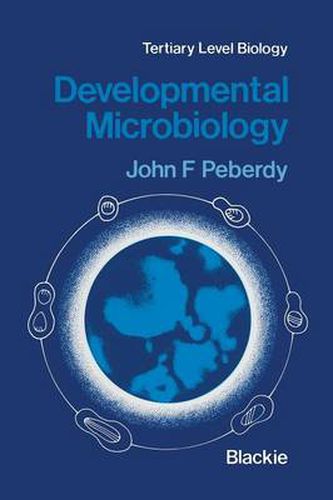Readings Newsletter
Become a Readings Member to make your shopping experience even easier.
Sign in or sign up for free!
You’re not far away from qualifying for FREE standard shipping within Australia
You’ve qualified for FREE standard shipping within Australia
The cart is loading…






This title is printed to order. This book may have been self-published. If so, we cannot guarantee the quality of the content. In the main most books will have gone through the editing process however some may not. We therefore suggest that you be aware of this before ordering this book. If in doubt check either the author or publisher’s details as we are unable to accept any returns unless they are faulty. Please contact us if you have any questions.
SINCE THE EARLY DAYS OF MICROBIOLOGY IT HAS BEEN KNOWN THAT, during their life cycles, microorganisms exhibit developmental changes in common with other organisms. In the last decade interest in this aspect of microbiology has developed greatly, and research findings have provided an understanding of the genetic, molecular and biochemical bases of development. An important stimulus in this research has been the realis ation that microbial development, in its various forms, provides interest ing model systems that have relevance to a much wider understanding of the developmental processes in higher eukaryotes. Many undergraduate and other courses in microbiology reflect these developments. Up to now, the only source material for these courses has been symposia publications, or books of a more specialised nature and at an advanced level. The aim in writing this book, which is based on a series of undergraduate lectures given at the University of Nottingham, was to bring together the relevant aspects of the biology of microorganisms, in particular the bacteria and fungi. The algae and protozoa have been excluded, partly because of the limits of space and partly because they are very different from the bacteria and fungi in most aspects of their biology.
$9.00 standard shipping within Australia
FREE standard shipping within Australia for orders over $100.00
Express & International shipping calculated at checkout
This title is printed to order. This book may have been self-published. If so, we cannot guarantee the quality of the content. In the main most books will have gone through the editing process however some may not. We therefore suggest that you be aware of this before ordering this book. If in doubt check either the author or publisher’s details as we are unable to accept any returns unless they are faulty. Please contact us if you have any questions.
SINCE THE EARLY DAYS OF MICROBIOLOGY IT HAS BEEN KNOWN THAT, during their life cycles, microorganisms exhibit developmental changes in common with other organisms. In the last decade interest in this aspect of microbiology has developed greatly, and research findings have provided an understanding of the genetic, molecular and biochemical bases of development. An important stimulus in this research has been the realis ation that microbial development, in its various forms, provides interest ing model systems that have relevance to a much wider understanding of the developmental processes in higher eukaryotes. Many undergraduate and other courses in microbiology reflect these developments. Up to now, the only source material for these courses has been symposia publications, or books of a more specialised nature and at an advanced level. The aim in writing this book, which is based on a series of undergraduate lectures given at the University of Nottingham, was to bring together the relevant aspects of the biology of microorganisms, in particular the bacteria and fungi. The algae and protozoa have been excluded, partly because of the limits of space and partly because they are very different from the bacteria and fungi in most aspects of their biology.